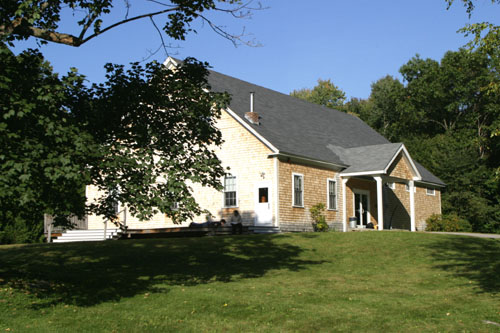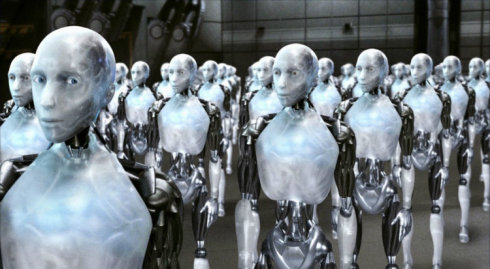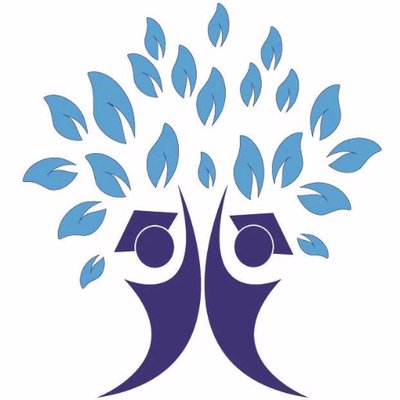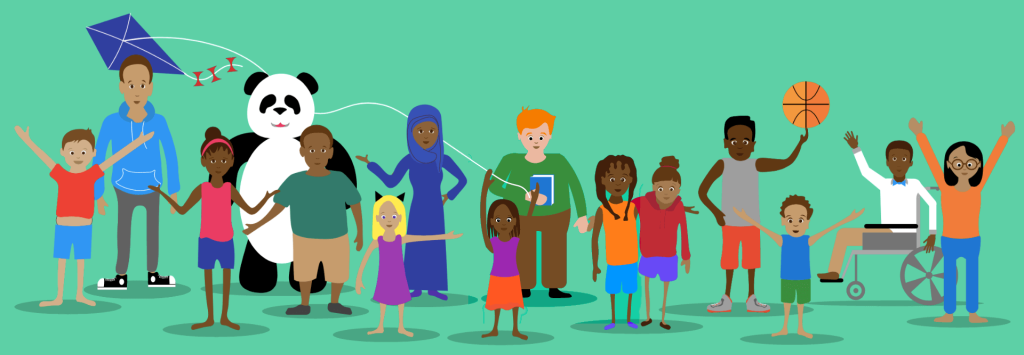中文版
I had the great fortune to visit for two days the Sudbury Valley School in Framingham, MA. I have known them for years, and I have read of them through their published books, articles, and videos. I also know similar schools such as Summerhill. But to be actually there to experience it is an experience I always look forward to. On our first day of arrival, the school principle and the founder, Dan Greenberg told me to take the precious opportunity to experience sudbury fully. So I was determined to put down all my previous knowledge of sudbury and jut experience it while I was there.
This sudbury vallley school is the very first sudbury school. It was founded in 1968. Now there are around 50 sudbury schools across the country and around the world. This first sudbury school is quite big. There are two major houses and a vast grass field between the two houses. The pond behind the main building is that famous pond that I have read so much about in sudbury publications.

The main house has two floors with more than 10 rooms. The office is upstairs. There is a room for little kids around 3 to 6 or 7 years old. There are a lot of books of these age groups and various kinds of toys. There are also ipads. I can often see kids reading books in this room. And quite often, two or three kids read one book together. There is also an art room, which is equipped with painting brushes, boards and pottery making tools. There are also a lot of books on arts in this room. I took a glimpse of the books and felt it had a wide coverage of various topics on arts, such as painting, drawing, photography, books on Greek arts, Roman arts, Japanese arts, and so on.
There is a room used as kitchen. I read in the sudbury book “Free at last” that they had a very good cook teaching there and they had been making all kinds of stuff. However, that teacher is not there anymore. So there aren’t as many activities as it used to have. But while we were there, I still saw a couple of times that the kitchen was “in session”. When the kitchen is in session, both doors to the kitchen will have signs hanging up saying “Cooking in session”. So unrelated people are not allowed to enter the kitchen during the cooking session.
In sudbury, there is a list of names beside every equipment. On the list is names of people authorized to use the equipment, including staff members. The longest list I saw is the one beside the printer. I guess everyone is on that list except the very youngest students.
There are a few rooms used as computer rooms. There is also a discussion room. People who want to discuss various topics can come to this room. I stayed in this room for a few hours to listen to their discussions. There were all kinds of topics. Some more serious. For example, people were engaged in topics related to the US presidential election, such as the source of funding. There were other “smaller” topics such as varieties of coffee or cheeses. The conversation is quite casual. There is no formal format of discussion. It is pretty much driven by people’s interest.
There are also several quiet rooms. People who want to stay quiet can come to these rooms. I think students who are preparing SAT exams probably will study there.
I noticed one thing about sudbury is that every room has a lot of books. There are bookshelves against every wall, and they are filled with all kinds of books. Books are labeled with topics, such as culture, politics, philosophy, arts and so on. I took a quick glimpse of books in each room. There are really quite a wide range of topics, and I can tell some books are really good. There are also a lot of books that I have never seen before. But at the least that I didn’t find books that no one wants to read. I have a feeling that the books in sudbury are quite selected and of high quality. I was thinking then that if I can stay for a few months in sudbury, just reading the books there would be quite fulfilling for me. What is a little disappointed for me is that I didn’t spot many students reading books there during my two days of visit, not as many as I have expected. I did see the very young kids reading a lot. I also saw a girl about 10 years old holding a big Harry Potter book reading very quietly for a long time.
Besides the main house is the basketball playground. There are kids playing basketball there throughout the day. Bigger kids and younger ones are playing together there.

The other house across the whole grass field is the activity room (I forgot the name they call it). From my vague memory, I remember sudbury school teacher told me that it is often used for performance. Sometimes dancing parties are here too. There is a special room for computer games. Also a music room fully equipped with music instruments that are enough to form a rock and roll band. The room is made soundproof. A side wall has a big glass window so people in the other room can watch the play, just like those broadcast rooms in the radio stations. I watched a few improvised plays from students. Personally I felt they played really well.
In sudbury, there are two sign in and sign out sheets. One is for all people including the staff. Everyone has to sign in when they get to the school, and sign out when they leave. I asked a sudbury school teacher. She said this form is to meet the requirement of MA that every school age kid has to be guaranteed on average 5 hours a day’s learning. The other sheet is for children over 13 years old. It is for them to leave the campus to engage in various activities in society. Sudbury doesn’t want to confine these kids to campus. They should have the freedom to leave the school to learn whatever they want to learn. However, it doesn’t mean children older than 13 years older can get this permission automatically. They still need to apply and get certified for going off campus, although they don’t need to apply every time. If older than 13 and certified, they can sign out when leaving the school, and write down a phone number at which they can be reached, and they need to make sure that they have school contact number with them. I remember in the book “Free at Last”, sudbury school teachers will help students find apprenticeship opportunities in society. Children old enough shouldn’t be confined to campus, which would be bad for their learning.
Overall, sudbury gives me a feeling that this is a place that kids can explore their lives. There are books for reading. They can try painting, making pottery, playing musics or sports, cooking, and so on. Or they can just do nothing and be with themselves, contemplating on things. They can talk with students of different ages, or with the teachers. Or they can go off campus to try other learning opportunities. The role of the teachers here is to help students doing their own explorations.
There are judiciary committee meetings once a day and school meetings once a week. Judiciary meetings start at 11am every morning. They go about 1 hour. The judiciary committee processes the complains raised by students and staff. There are bigger matters among the complains. For example, while we were there, there was this complain about the wood chips on the floor of the music room around the drums. No one seems to be cleaning it up. So the judiciary committee first sent a representative to go check the music room to verify the fact and seriousness of it. And the committee also brought over the students using the music room for questioning. Since this is a bit bigger matter, investigation report was written up for the school meeting. Smaller matters in the complains are often things like forgetting to sign out or sign in, forgetting duties assigned such as throwing out trashes, quarrels among students, and so on. We know it is very common for the children to have quarrels, especially among boys. During the judiciary committee meeting, it is quite difficult for young kids to elaborate clearly what actually happened. For example, a boy about 5 or 6 years old said he forgot it when committee asked him about a matter he had complained. The committee had to ask if there were others present at the time and ask them to come over to tell what actually happened.
While I was sitting there, watching the committee working, I was thinking of many things. I have read of the judiciary committee a long time ago, and I know it is the core of sudbury. I understand its importance. But while you were there, many questions still came up. Is it worth the time for the committee members to spend so much time processing these “trivial” matters? Is the judiciary committee just a mimic of the adult world for the children to “learn” things? Is it just a make believe game? How will these matters being handled in other schools? One or two adults will draw a conclusion after asking a couple of questions? In my own childhood, how would I want these to be handled?
Maybe these things are just small matters in the eyes of adults. But to the kids, they are big matters. The judiciary committee of sudbury schools, if we call it an experiment, at least this experiment has proven that kids are capable of resolving their matters by themselves. And the process of resolving these matters IS the process of learning. These are real. They are not artificial. The judiciary committee is a real functioning structure in the children’s world, and it is nothing to be taken lightly. If other schools cannot adopt other components of Sudbury Model, at least I feel the judiciary committee should be adopted. In my opinion, this alone is a major contribution that this sudbury school has made to our world, if not to mention other things.
Within two days, I attended two judiciary committee meetings and observed around 6 or 7 complains being processed. I witnessed the display of critical thinking and articulate expression from the children. For every step, they will ask people all present (sudbury meetings are open to all who are interested) if they have different opinions or more thoughts that they wish to express before the committee move on to the next step. When the students (especially those very young ones) expressed in very vague terms or in speculating terms they were always asked that they should try to speak in more clear terms and state more facts and evidences instead of just speculation. If the judiciary committee has unanimously reached resolution that a certain school rule has been broken in the case, the defendant will be asked if s/he agree that s/he has broken that rule and sign the sheet if no objection. Then the next step is to decide on punishment. Normally warnings were given first. If a couple of warnings have been given before, a concrete punishment is pursued. Mostly that is a fine of a few bucks (3 or 5 dollars from my memory). But if the student thinks that his or her family is not that economically sound, s/he can opt for some kind of errands such as throwing out trashes. Watching these, I feel students from other so called regular schools, whether they preform well or bad in those schools, are all some kind of freaks compared to students in sudbury. They are not healthy and have all sorts of problems. Although it is judiciary committee meeting and it is about handling various complains, I feel a sense of peace and life there.
Many people have realized that school is more about managing students than teaching/learning. OK, let’s talk from the perspective of management. I think sudbury has demonstrated another type of management, one that treats people as human beings instead of reducing them to machines. And this kind of management is not even costly. It relies mostly on the self-management from the students. This kind of management is not mechanical and violent. It is cultivating peace within people’s hearts. It is the same thing as what Gandhi did in the villages of India around 100 years ago that build peace within people. This management shouldn’t be very hard to reproduce since it brings us closer to the very qualities that make us human being instead of alienate us from those qualities as other schools do. Learning this type of management is learning of ourselves. BTW, sudbury has a starter kit to help you get started if you are interested in starting a sudbury school. The starter kit includes a school handbook which contains school rules that is base of the judiciary committee meetings.
Ever since I heard of sudbury valley school for the first time, I have liked sudbury very much. I feel very close to it. But I might be a little leaning towards the unschooling side of it. Staying in sudbury for 2 days made me realize that sudbury school is the real school and sudbury school teachers are the real teachers. In other schools, people sign up to become teachers. However, they lack that kind of patience that requires of them to become teachers. Sudbury school teachers are doing what teachers should be doing, and they have the patience. Sudbury is not just for now, it is also for the future. This visit makes me more determined that I should build a school or a learning center. (If you are interested in building one together, please contact me.)
In sudbury, students vote for the staff members. The result of voting will be displayed publicly. While we were there, we saw the result of voting from the previous school meeting. It is interesting to see how students have voted for the staff. Now I can understand why Dan Greenberg said in his talk that he was always a little nervous when the voting time comes. 🙂 (Staff members who cannot pass students vote will have to leave.) We came at the day of school meeting so we were fortunate to witness it. The school meeting is quite open and transparent. The one we attended was hosted by a senior student. There was a meeting schedule printed before the meeting, and everyone attending the meeting was handed one copy. And the schedule is also publicly displayed on school’s bulletin board. The meeting we attended has a review of school budget. So the school budget is also posted. If there are any concerns regarding school rules in the school handbook, they should be discussed in the school meeting. The school meeting is the only authority for making school laws.
Two days is not enough. I still have one remaining question not fully answered: whether students in sudbury are learning with their full capacities? Whether they are learning in their best and fastest means? This was a question I was always asking myself when in sudbury. I think this question was partially answered since I could see that students there are learning and are growing healthily. But are they fully driven for learning? Did they waste time? I cannot fully answer that question. I know problems in other schools. From very early on of my schooling, I knew school is a waste of time. But at the least, schools have one advantage: whether intentional or unintentional, mass schooling forms a national competition platform based on tests and scores. It is a highly competitive contest, in which students can find reference points and compare with their peers. The contest provides a feedback mechanism and students learn how to manage their time in such competitions and it is also a way one gets to knows about oneself. However, we can also see that such a competition is very one dimensional, it limits people and wastes people’s lives, it probably does a lot more harms than goods.
I think sudbury is not against competition, although sudbury doesn’t want to give students any external rewards so students don’t evaluate themselves according to other people’s criteria. If my memory is right, I remember Dan Greenberg seemed to have talked before that the kind of competition in sudbury is the kind in real life, which are not like those standard test competition but more cooperative, just like in sports. Sudbury wants real challenges of life instead of artificial ones that try to mimic the real world. But I guess it is not easy to create such real competitions. One thing for sudbury is that I wish there are more students. There are less than 50 or 60 students in the school that I visited (Update: 50 or 60 students are the number of students that I saw on campus during my visit. Now I think there are probably a lot more students in that school and many senior students might be off campus participating in various learning activities since I didn’t see many senior students on campus while I was there. According to Peter Gray’s book Free to Learn, for the recent years, this very first sudbury school has around 130-180 students. 130-180 students, to me, is not a small number. I remember my school when I was little was around that number, and personally I felt that there were many things going on at school. At schools of my time in China, kids of different ages were playing together. Nowadays, schools in China have a lot more students. However, kids of different ages don’t play together anymore–they don’t even play much with their own classmates compared with students at my time. So even you see a lot of students, you feel lonely, and not really a rich learning place.). If there are more students, there will be more diversity and richness of activities for students to play with. I feel when Sudbury Model becomes the mainstream and there are a lot of sudbury schools around, students will be more involved in all kinds of real life activities and competitions.
If you don’t know much of sudbury, it is a school with no classrooms, no homework and no exams. If students are interested in certain subjects, they can request the teachers to arrange a class. The length of the class is also dependent on students’ interest. So the class is quite dynamic in nature. However, I didn’t see any classes going on during my visit this time. I asked one sudbury school teacher. She said there aren’t that many classes as before because nowadays students mostly are able to find info or tutorials online that can meet their needs. So there is much less need for giving classes. It seems to me that sudbury naturally adapted to the new internet time because it always starts from students’ needs.
We also visited another school during our trip. It was completely a sudbury school 10 years ago, according to the school master. But gradually they added other elements to it. So here they start to have regular classes now so students can be on either sudbury track or regular classes track. The classes, however, are still based on students’ interests. So at the beginning of the semester, the staff will have a survey of the students, getting to know what they want to learn. Then the staff will design the classes for the semester accordingly. I just happened to witness a debate class on my day of visit. Even students on the regular classes track can choose to enter a “time off” period (I forgot how they call it.) so they don’t need to take class during that period. The school master told me that they had to change mainly because of requests from the students. Because the students felt the pressure when they saw other kids around them are going to schools with standard classes and with homework and exams. So they worried if they were wasting their time in the sudbury school, and thus requested the school to offer classes. I saw a lot of classes going on throughout the day in this school. I feel glad that these classes are based on survey of student interests and designed accordingly. This mixed model seems to be more comprehensive and more flexible. However, I feel I agree with Dan Greenberg, the founder of the Sudbury Model, that any artificial environment cannot really mimic the real environment. For example, the debate lesson I observed in this school, I feel it is quite artificial. It is hard for people to engage in an artificial debate. When people are open-minded in real life, there will be debate everywhere. So just make it serious and let people debate on important topics and debate thoroughly. With some guideance from staff, I believe it will be a very fullfilled learning. So I believe it is better to learn in real life and engage in real activities. The challenge, however, is how to make children more in touch with real life in a safe way.
If I want to build a school or learning center, I feel I want to add three things to the Sudbury Model. I am not sure these three things are really necessary. But I want to share them here so we can have a discussion.
First, I want to add more guidelines on how the youth grow. Sudbury is against classes by ages, and against curriculum. But I feel we still can offer some constructive advises to students to give them somehow a guideline or scaffolding to start with. For example, I have talked before the three stages of growth for people. In the past, we lack open discussion in this field. And a lot of so called scientific researches were hijacked to serve the purpose of mass production. But in this modern society, I feel we can discuss these things more openly. What areas do people need to grow themselves? These discussions are only suggestions to the young people, without any compulsory means. It is just like young people can understand life by reading sociology books or novels, these books are also just for reference if they are well written. So I hope there are more of open discussions in this area so young people can have more sense of directions and scaffolding to start with. They can correct themselves as they gain more practical experiences.
Secondly, I want to add more social opportunities to schools, making schools merging with society better. For example, we can find better apprenticeship opportunities via the help of Internet or have better field trip opportunities. For example, we can have a website, where professionals of all walks can post their available times, say a Friday afternoon. During such times, people can tour their offices, ask them questions, or observe how professionals work. Frankly, sudbury has always put a lot of emphasis on this, and teachers there went out of their ways to help students find apprenticeship opportunities in society. I hope with the development of internet, we can enrich more the social aspect of Sudbury Model.

Thirdly, I want to add self-reflection and meditation. The purpose of school or learning center should be helping students understanding themselves. Self-reflection and meditation practices can be very instrumental in this regard. In US, there are already a lot of schools that use meditation to help students learn more effectively in classes. I read in local newspaper of New York City that local schools actually have meditations several times throughout the day. I met with a friend in NYC who told me that his child is in a school in Brooklyn, where they have a program funded by David Lynch that have students meditate three times a day, in the morning, at noon and in the afternoon. I remember a couple of years ago I have read that some universities have meditation classes to help students focus and there are research papers on how meditation helps students learn more effectively. Meditation is an ancient practice that is shared by ancient yoga practices, Zen, Judaism, Christianity and so on. We only need to extract elements out of it, as a way of self exploration.
On a second thought, I realize that Sudbury is based on a deep trust on children. Out of all similar grassroots education efforts, I feel Sudbury has the most trust on children. This trust is also a deep trust on life, trust that children if given time and space will grow naturally, in their own ways and in their best ways. So Sudbury staff refrained a lot not to intervene in such a natural process, not even suggest a curriculum. But Sudbury staff are very supportive in setting up and maintaining a environment that fosters learning. My learning experiences tell me that any teaching, even great teaching from great teacher, can be harmful at the same time as it destroys people’s ability to explore by themselves.
My recent two years of work experiences make me more firmly believe that modern schooling was created to serve the mass production of the industrial age. I recently worked on projects of Internet of Things, so I had chances to be exposed to hardware production, which is totally different from software. Hardware is about manufacturing. It is very limited by the physical world, such as by the factories. When you design the hardware production workflow, you have to make it extremely dummy so it is just pressing 1 or 2 keys on the assembly line. If you make it a little more complex, you increase the error rate, which translates into reduced profit margin directly. So you can imagine that in the highly competitive mass production time what kind of workers they want. Any healthy and complete man wants to just press those two keys throughout the day? So to serve the mass production, they have to make people willing to work along the assembly line to become part of the machine. The workers should not have a lot of thoughts and ideas, and they should not feel that they have other alternatives of lives. How do you achieve that? Mass schooling is the answer. Modern schools mimic factories. Even for knowledge based workers, they are only operating within environment of confined parameters. So in the industrial age, all theories, whether for management or education, are to serve the assembly lines.
Recently I had a chance to participate in a voluntary work at a dam. Hundreds of people lined up to pass baskets of dirt, dump the dirt and pass back the baskets. It is like an assembly line. So I had the experience of how it is like working on an assembly line. If any part of the line slows down, the whole assembly line slows down. So I can imagine what the kind of management based on the assembly line should be like. If I had a chance to work in the factory, I should feel more deeply of the assembly line. Our work at the dam is voluntary and temporary. But try to imagine massive production like this, imagine the assembly line production as the major way of production under a competitive market. How will it impact our human society? Education, of course has to serve these massive assembly lines.
I lived in the Pearl River Delta for the past few years, which brought me to a close contact with the manufacturing culture. Pearl River Delta is the biggest manufacturing center in China and in the world. The company culture here is dramatically different from companies that I have worked for in the past. It is a lot more about hardworking and disciplines. The creative culture in the internet companies is very foreign here. But even in this region, many factories are moving away to other regions of China or Vietnam. And the companies here are trying to transform themselves into internet companies. However, the culture is so different and it is very hard to make them understand why internet companies have such different values. Internet and software companies are constantly exploring new fields and creating new things. Thus internet and software companies value people more. The structure and culture of these companies are to attract the creative minds and build environment that these creative minds can grow and work the best. I think the book “How Google works” illustrate this quite well. It is a new age. It is very different from manufacturing culture.
These are in China. In US, the economy has moved from manufacturing to creative for many years. However, the education system is still the one what was created 2 centuries ago to serve the manufacturing assembly lines. Thus a lot of people are not able to participate in this creative economy and benefit from it, while the creative economy also cannot find enough capable hires. So on the one hand, you have a great mass of gloomy people who are economically distressed and feel left out. On the other hand, the creative economy cannot really take off and many people are making money from speculation instead of really building things. Also many people cannot cope with an increasingly more open and sophisticated society that actually offer a lot more choices. So 10 years ago, I already said that the root of all these is the education system, which greatly lags behind out modern economy. The crisis is only getting much worse now. Looking around the world, I can see that bigot and irrational have become the norm. Our economy is becoming a lot more powerful and more creative. Our society is becoming increasingly sophisticated. However, our education system still stays in the industrial age. Our modern time calls for more people who are able to think independently and command multiple disciplines of knowledge. We need to return to the age of rationals, the age of common sense. We have to be able to shed the traumatic impact that mass schooling has had on our society. If we are not able to do that sooner, we will only be in more dangerous crisis.
The kind of jobs that you are preparing yourself or your children for at schools today will be replaced by robots when you or your children graduate. Foxconn, the company that makes iphones for Apple, already uses a lot of robots on its assembly lines. With the great advance of AI today, we have to ask what kind of work is for us human being in the future.

We need great innovation in education/learning! We have to be able to imagine the new world. There are a lot of problems today. People see these problems, but they don’t see actually it is a very bright future waiting for us. If you are able to see through these problems and use your imagination, you know we can solve all these problems together. The key to that is a revolutionary change in our education system!
P.S. I recounted here in some details of what I saw in sudbury. This is to help many people who are not familiar with sudbury schools to get an idea what sudbury schools are like. However, my observation may not be correct and certainly my memory can become vague. If you get interested in sudbury and want to know more about sudbury, you can go to sudbury’s official website. There are a lot of resources there (books, audios, videos and articles) that will tell you a lot more about sudbury and the resources there should tell you about sudbury more accurately. So please take the content here only as some kind of unofficial introduction to sudbury schools.










